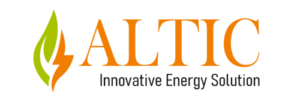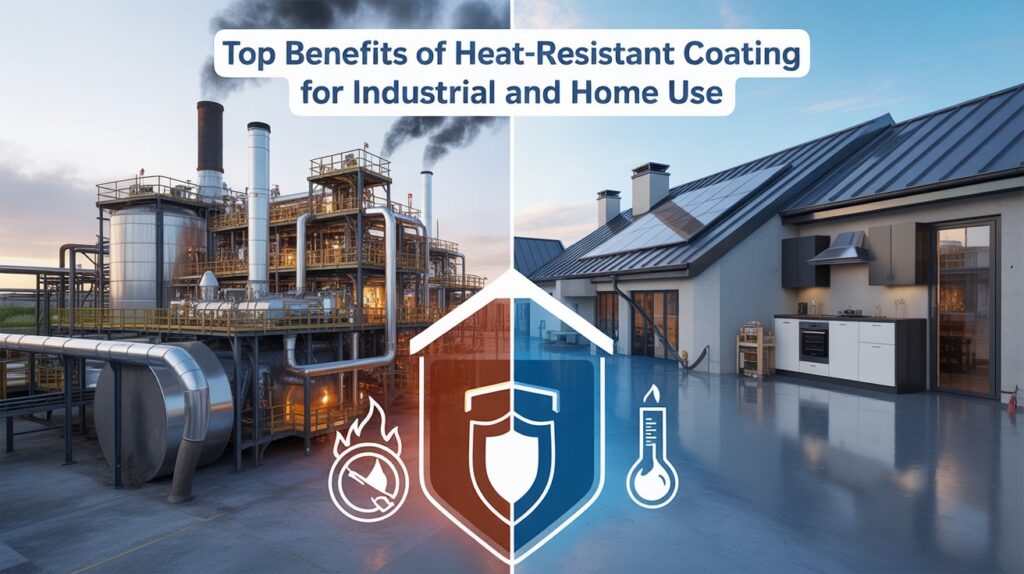Heat-resistant coatings have become essential in modern construction, industrial operations, and even home applications due to their impressive ability to withstand elevated temperatures and protect valuable assets. Whether safeguarding heavy machinery in factories or increasing comfort and efficiency in residential spaces, heat-resistant coatings are redefining safety, durability, and energy efficiency. This blog explores the top benefits of heat-resistant coatings for both industrial and home use, backed by current trends and expert insights.
What Are Heat-Resistant Coatings?
Heat-resistant coatings are specialized paints or protective layers formulated to withstand extreme temperatures without degrading, discoloring, or losing effectiveness. Most are designed for metal, masonry, or other substrates prone to thermal cycling or direct heat exposure. These coatings work through reflection, insulation, or formation of temperature-resistant barriers, making them indispensable for a wide range of applications in industries, homes, and public infrastructure.
Protection Against Thermal Damage
Exposing surfaces and equipment to high heat can lead to cracking, warping, weakening, and even catastrophic failure. A heat-resistant coating forms a robust thermal barrier over the substrate, preventing temperature-induced breakdown. This is especially crucial for:
- Industrial machinery and heavy equipment in factories
- Pipelines, exhaust systems, and boilers in manufacturing
- Cookware, grills, and oven exteriors in homes
By minimizing thermal damage, these coatings preserve the integrity and lifespan of surfaces under constant or sudden heat exposure.
Enhanced Durability and Reduced Maintenance
Repeated heating and cooling cycles can quickly deteriorate unprotected surfaces. Heat-resistant coatings dramatically increase surface durability by providing:
- Resistance to thermal shock and expansion
- Protection against degradation and surface fatigue
- Shields against UV rays, further slowing deterioration
This means that equipment, roofs, and even household fixtures last longer and require fewer expensive repairs, translating into significant savings for both industries and homeowners.
Corrosion and Oxidation Resistance
High temperatures often accelerate oxidation and corrosion, especially when moisture or chemicals are present. Metals are particularly susceptible to rust and failure in such environments. Heat-resistant coatings create a seal that prevents oxygen, moisture, and aggressive chemicals from reaching the substrate beneath the protective layer, reducing the risk of corrosion or chemical attack. This is vital in:
- Chemical processing and oil & gas facilities
- Automotive and aerospace components exposed to varying climates
- Outdoor metal furniture and home installations.
Improved Energy Efficiency
Energy costs and sustainability are pressing concerns for both industry and homeowners. Heat-reflective and insulating coatings cut down on heat absorption, helping maintain interior temperatures:
- In factories, less heat enters from roofs and walls, reducing the need for air conditioning or cooling processes.
- In homes, reflective coatings keep interiors cool, reducing the electricity required for climate control.
The result is lower energy bills and greener buildings, supporting both economic and environmental goals.
Fire Resistance and Enhanced Safety
Certain heat-resistant coatings, especially intumescent types, expand and form a fire-stopping layer when exposed to high temperatures. These coatings:
- Slow down the spread of flames across surfaces
- Help structures meet fire safety codes and regulations
- Protect vital escape routes and critical infrastructure
This application is crucial for:
- Warehouses, factories, and data centers with valuable or hazardous contents
- Residential buildings, particularly in fire-prone regions or for fire doors and window frames
- Oil, gas, and chemical industries where fire risk is high
Extended Equipment and Surface Lifespan
By reducing exposure to heat, moisture, and aggressive chemicals, heat-resistant coatings contribute directly to the prolonged service life of:
- Engines, turbines, and industrial ovens in manufacturing
- Home appliances such as stoves and chimneys
- Roofing materials and structural steel in both residential and commercial buildings
This longevity means fewer replacements, reduced raw material consumption, and better ROI on assets.
Cost Savings and Operational Efficiency
Investing in heat-resistant coatings delivers substantial cost benefits:
- Reduced downtime due to fewer breakdowns or unplanned maintenance
- Lower frequency of full-scale replacements or overhauls
- Decreased need for additional insulation or expensive maintenance-only solutions
In addition, the consistent performance of protected equipment boosts overall productivity in industrial settings, directly contributing to profitability.
Health, Comfort, and Indoor Environment
In homes and workplaces, heat-resistant coatings improve indoor comfort and occupant well-being:
- Buildings in urban heat islands experience cooler interiors thanks to reduced heat transfer from roofs and exteriors
- Coatings with anti-microbial properties inhibit mold, mildew, and bacteria growth, improving indoor air quality
- Less condensation forms on surfaces, protecting electronics and sensitive materials.
Environmental and Sustainability Benefits
Modern heat-resistant coatings often incorporate low-VOC (volatile organic compound) technologies, reducing harmful emissions and environmental impact during application and throughout their lifecycle. By promoting energy efficiency and extending material lifespans, these coatings also help:
- Lower buildings’ carbon footprint
- Comply with stricter regulations on emissions and VOCs
- Support green certification efforts, such as LEED for buildings.
Versatility Across Sectors
The uses for heat-resistant coatings span nearly every major industry as well as private households:
- Industrial: Machinery, ovens, chemical tanks, smokestacks, pipelines
- Automotive/Aerospace: Engine parts, exhausts, fuselage sections
- Energy: Power stations, refineries, solar panel frames
- Construction: Commercial and residential roofs, siding, supports
- Home Use: BBQ grills, stoves, fireplaces, radiators, outdoor furniture
Trending Applications and Innovations
Demand for heat-resistant coatings is growing steadily, driven by innovations and new use cases:
- Adoption in energy-intensive sectors to minimize environmental impact
- Integration of nano-materials and ceramics for ultra-high temperature resistance
- Development of multi-functional coatings (e.g., combining fire-resistance, anti-corrosion, and insulation in one layer)
- Increased focus on aesthetics—offering color options and finishes for visible applications.
Choosing the Right Heat-Resistant Coating
Selecting the best product requires consideration of:
- The maximum temperature the coating must withstand
- Substrate material (metal, concrete, plastic, etc.)
- Environment (outdoor, chemical exposure, humidity)
- Desired additional properties (corrosion resistance, fire rating, low-VOC)
Always ensure products meet local codes and international standards, particularly for safety-critical and industrial applications.
Future of Heat-Resistant Coatings
With more industries and homeowners recognizing value in energy savings, safety, and durability, the global heat-resistant coatings market is projected to grow robustly, reflecting both regulatory and market-driven demand for enhanced building and equipment performance. Expect ongoing advances in eco-friendly formulations, broader adoption in emerging economies, and increasingly rigorous safety and performance standards.
Conclusion
Heat-resistant coatings have reached mainstream acceptance across industrial, commercial, and residential markets thanks to their powerful incentives: maximizing equipment life, improving safety, enhancing comfort, slashing energy bills, and shrinking environmental footprints. Whether for protecting a massive refinery or keeping a family home comfortable and sustainable, investing in quality heat-resistant coating solutions brings tangible, long-lasting rewards. As innovations continue and awareness spreads, these coatings are set to play an even more crucial role in the infrastructure and homes of tomorrow.

